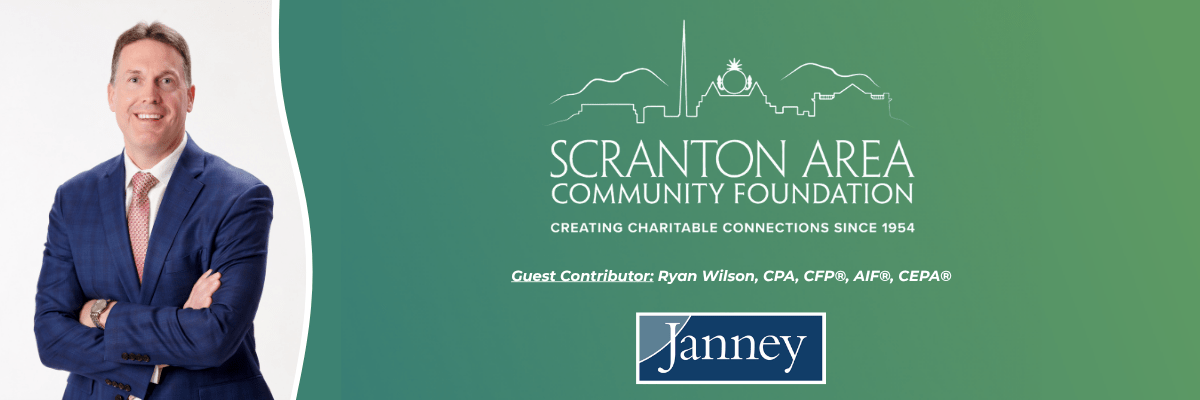By: Ryan Wilson, CPA, CFP®, AIF® of Janney Montgomery Scott LLC
As we look ahead to year-end giving season, donors across Northeastern Pennsylvania are starting to ask an important question: considering the recent tax legislation, should I give now, or wait until next year?
For many, especially those with higher incomes or more complex charitable plans, 2025 may present a more impactful tax benefit and possibly the last chance in the foreseeable future to maximize the tax benefits of giving.
That’s because starting in 2026, new tax rules under the recently passed One Big Beautiful Bill (OBBBA) will change the way charitable deductions work for individuals and families across the country.
What’s Changing in 2026?
Beginning next year, the rules for itemized charitable deductions will become less generous for higher-income taxpayers:
- A new “0.5% floor” on deductions means you’ll only be able to deduct contributions that exceed 0.5% of your adjusted gross income (AGI).
- There’s also a new 35% cap on the deduction benefit that will reduce the tax for those in the highest tax bracket (37%).
This means that for many donors, especially those with significant income or planned gifts, charitable contributions made in 2025 may provide significantly more tax value than the same gift made in 2026.
If you’ve been considering a large charitable gift, such as appreciated stock, a donor-advised fund contribution, or a multi-year pledge, this could be the right time to act.
What’s New for Standard Deduction Filers?
The 2026 changes also include something new: for the first time since 2021, taxpayers who don’t itemize will be able to deduct charitable contributions. Starting next year, individuals can deduct up to $1,000, and joint filers up to $2,000, in cash donations to qualifying nonprofits, even if they take the standard deduction.
While modest, this change opens the door for many more NEPA residents to receive a tax benefit for their giving, especially those who don’t have enough deductions to itemize but still want to support local causes.
What Does This Mean for Donors in NEPA?
For donors who itemize, and particularly for those with higher incomes, 2025 is likely the most tax-efficient year left to make larger charitable contributions. Waiting until 2026 could mean losing a portion of the deduction you would otherwise receive this year.
At the same time, the 2026 rules create new giving opportunities for households across the region, especially those who give smaller amounts but want to do so more intentionally.
Whether you give through the Scranton Area Community Foundation, a local non-profit, your house of worship, or another organization you care about, we encourage you to talk with your financial or tax advisor now. Thoughtful planning in 2025 can help ensure that your generosity goes as far as possible to support both your financial goals and the causes that matter most to you.
Janney Montgomery Scott LLC Financial Advisors are available to discuss all considerations and risks involved with various products and strategies presented. We will be happy to provide a prospectus, when available, and other information upon request. Janney Montgomery Scott LLC, its affiliates, and its employees are not in the business of providing tax, regulatory, accounting, or legal advice. These materials and any tax-related statements are not intended or written to be used, and cannot be used or relied upon, by any taxpayer for the purpose of avoiding tax penalties. Any such taxpayer should seek advice based on the taxpaye’s particular circumstances from an independent tax advisor. For more information about Janney, please see Janney’s Relationship Summary (Form CRS) on www.janney.com/crs which details all material facts about the scope and terms of our relationship with you and any potential conflicts of interest.

